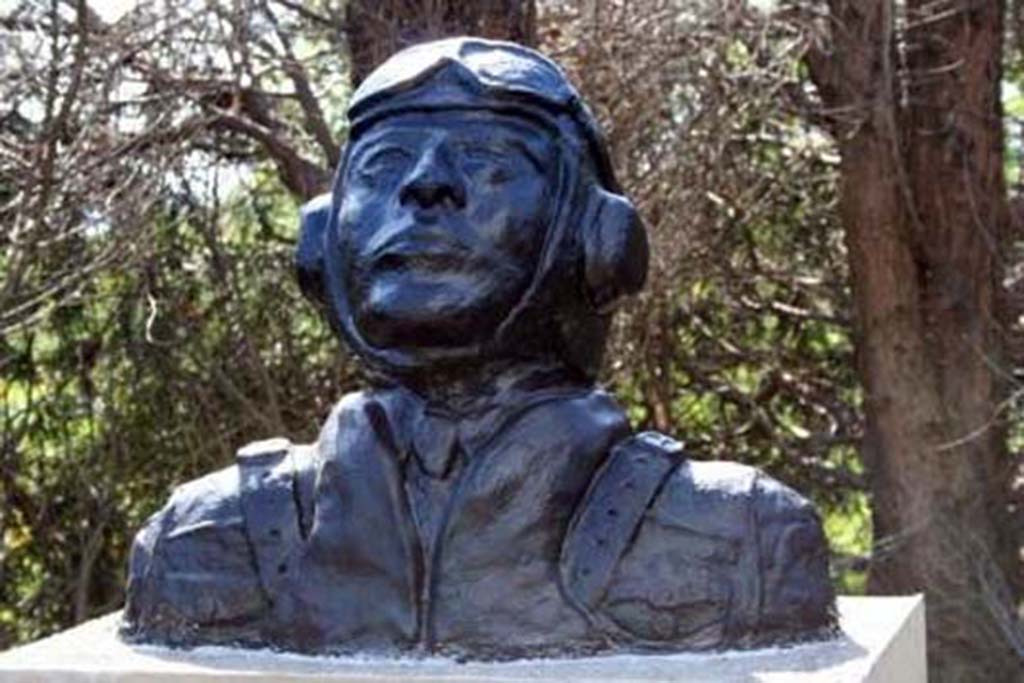Scotland has a prestigious past firmly rooted in the field of aviation.
From inventors to pilots, this list of intrepid airmen reads like a who’s who of flight history.
1. Frank Barnwell
Captain Frank Sowter Barnwell was a University of Glasgow graduate who, in partnership with his brother Harold, achieved the first powered flight in Scotland. The Barnwells established Grampian Motors & Engineering Co in Stirling, and between 1908 and 1910 they built three experimental powered aircraft, the third of which, in 1911, won a prize for the first flight in Scotland over a mile. Frank Barnwell later worked as a designer for the Bristol and Colonial Aeroplane Company.
2. Brian Binnie
William Brian Binnie is a test pilot for an experimental spaceplane who, in 2004, became the 435th person – and the first Scot – to go into space, setting a winged aircraft altitude record in the process. The former US Navy officer was born in Indiana, but moved to Scotland when he was five, where his Scottish father taught at Aberdeen University. He lived in Aberdeen and Stirling before the family moved back to the US when Binnie was a teenager.
3. Wallace Cunningham
A Glaswegian spitfire ace who, as part of 19 Fighter Squadron, formed part of Douglas Bader’s famous ‘Big Wing’ during the Battle of Britain. That summer Cunningham shot down five German aircraft and was awarded the Distinguished Flying Cross. In 1941 he was shot down over Holland and spent the rest of the war in the Stalag Luft III camp, made famous by the Great Escape, in which Cunningham was not involved. After the war he became an engineer and died in 2011, aged 94.
4. Carlyle Everiss

Carlyle Everiss
Everiss was a young New Zealand fighter pilot stationed at Grangemouth during World War II. In 1941 he lost control of his spitfire whilst flying over the village of Cowie in Stirlingshire. Rather than eject, Everiss steered the plane towards a nearby wood before crashing, ensuring that the plane missed the village and avoiding a number of certain deaths. The 26-year-old died soon after being pulled from the wreckage. In 2007 Cowie residents raised £12,000 for a bronze bust of the pilot to be erected in the village.
5. Eric Melrose Brown
Eric ‘Winkle’ Brown was born in Leith in 1919 and fi rst flew when he was eight when he was taken up in a Gloster Gauntlet sitting on his father’s knee. He learnt to fly whilst studying German at the
University of Edinburgh and on the outbreak of war he joined the Royal Navy Volunteer Reserve as a Fleet Air Arm pilot. In 1942 he was awarded the Distinguished Service Medal. Brown holds world records for flying the most types of aircraft (487) and for the number of aircraft carrier landings.
6. Captain Ernest Edward Fresson
Born in England in 1891, Captain EE (Ted) Fresson trained as a pilot for the Royal Flying Corps in Canada in 1918. He later designed, built and flew an aircraft for a Chinese warlord before returning to Britain as a display flyer. Fresson fell in love with Scotland and in the 1930s established the Highland Airways Ltd, which pioneered flights in the Highlands and Islands, including the famous Orkney inter-island flights. He knew Scotland’s terrain so well he became an advisor on airfield construction sites to the Air Ministry during World War II.
7. Sir Robert Watson-Watt
A descendant of inventor James Watt, Watson-Watt was born in Brechin in 1892 and, after his engineering degree at Dundee University, was offered an assistantship by William Peddie, Chair of Physics. Peddie encouraged Watson-Watt to study radio. Working for the Met Offi ce, Watson-Watt successfully experimented with detecting the signal giving off by lightning to warn pilots of storms. He later worked on the system for the Air Ministry to detect aircraft, an early form of radar.
8. David Fowler McIntyre and Douglas Douglas-Hamilton
In 1933 28-year-old Flight Lieutenant David Fowler McIntyre and 30-year old Douglas Douglas-Hamilton, Marquis of Clydesdale, became the first humans to fly over the summit of Mount Everest. The Scots flew in biplanes with open cockpits and without parachutes – to save weight. The purpose of this incredibly dangerous mission was to map the summit to prove that the climbers George Mallory and Andrew Irvine, who had disappeared nine years earlier, could have reached it.
9. Percy Pilcher
Born in 1866, Pilcher served in the Navy before becoming an apprentice with a Govan shipbuilder. It was whilst he was an assistant lecturer at Glasgow University that Pilcher built and flew a hang glider called The Bat. He built three more gliders, including The Hawk, with which he broke the world distance record,
flying 250 metres. Pilcher was close to powered flight when he died after crashing The Hawk in 1899.
10. Jim Mollison
Born in Glasgow in 1905, Mollison was 18 when he became the youngest offi cer in the RAF and, at 22, the youngest flying instructor at Central Flying School. Mollison had a reputation as a playboy and made his name setting numerous fl ying records. In 1931, for example, he set a record time of eight days, 19 hours flying from Australia to England and from South Africa to England in four days, 17 hours the following year. Mollison was married to English flying ace Amy Johnson. Dubbed ‘The Flying Sweethearts’, they broke a number of records before divorcing in 1938.
TAGS

